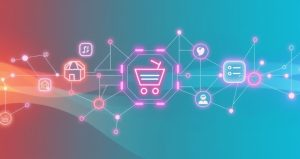Connecting your Etsy shop with third-party applications, known as Etsy integrations, is a pivotal step in transforming a creative hobby into a scalable business. These tools automate tedious tasks, streamline workflows, and provide powerful data insights, allowing you to focus on what truly matters: creating unique products and growing your brand. This guide explores the most impactful integrations that can elevate your shop’s efficiency and profitability, moving you from manual management to strategic automation.
Understanding Etsy Integrations: More Than Just Apps
Etsy integrations are specialized software services that connect to your shop’s backend through Etsy’s API (Application Programming Interface). This connection allows for a seamless flow of information, such as order details, customer data, and listing information, between your store and the integrated tool. Instead of manually exporting order lists or updating inventory on multiple platforms, an integration does the work for you automatically. This saves countless hours and significantly reduces the risk of human error.
The primary benefit is efficiency. Imagine a seller of custom-printed t-shirts. Without an integration, each order requires manually creating a design file, sending it to a print provider, entering the customer’s shipping address, and finally updating the Etsy order with tracking information. With a print-on-demand integration, this entire process is triggered automatically the moment a sale is made. This is the power of building an integrated ecosystem around your Etsy store, turning repetitive tasks into automated processes that work for you around the clock.
Key Categories of Etsy Integrations for Growth
Integrations can be grouped by the business function they serve. Focusing on the right categories based on your shop’s needs is crucial for maximizing your return on investment. Whether your biggest challenge is production, marketing, or financial tracking, there is likely a tool designed to solve it. Identifying your primary bottlenecks is the first step toward choosing the right integrations for your business.
Print on Demand (POD) Integrations: The Automation Powerhouse
For sellers offering custom apparel, home decor, or accessories, print-on-demand (POD) integrations are revolutionary. Services like Printful and Printify connect directly to your Etsy shop, automating the entire fulfillment process. When a customer places an order for a product like a graphic tee or a personalized mug, the integration automatically sends the order details and design files to the POD provider. They then print, package, and ship the product directly to your customer under your brand name.
This model eliminates the need for holding physical inventory, which drastically lowers startup costs and risk. You only pay for a product after you have made a sale. For example, a seller might list a t-shirt on Etsy for $28. When it sells, the POD provider automatically charges them around $14 for the shirt and printing, plus shipping costs. The remaining amount is pure profit, all without ever touching the physical product. This allows for immense scalability and the freedom to experiment with dozens of designs without financial commitment.
Marketing and Customer Engagement Tools
While Etsy has a massive built-in audience, building a brand that extends beyond the platform is essential for long-term stability. Email marketing integrations are key to this strategy. Tools like Mailchimp or AWeber can be connected to your shop to help you build a customer email list. This allows you to communicate directly with your audience, announcing new products, offering exclusive discounts, and building a loyal following that is not dependent on Etsy’s algorithm.
Similarly, social media management tools can integrate to streamline your marketing efforts. These platforms allow you to schedule posts, manage customer interactions, and analyze your campaign performance across multiple channels from a single dashboard. By automating your social media presence, you can maintain consistent engagement with your audience without it consuming your entire day, driving valuable external traffic back to your Etsy listings.
Accounting and Financial Management Software
As your shop grows, managing finances becomes increasingly complex. Etsy integrations for accounting software like QuickBooks or GoDaddy Bookkeeping are invaluable for maintaining clear and accurate financial records. These tools automatically import your sales and expense data directly from Etsy, categorizing transactions and simplifying the process of tracking revenue, fees, and material costs. This provides a real-time overview of your shop’s financial health.
The true value of these integrations becomes apparent during tax season. Instead of spending days or weeks manually compiling spreadsheets and receipts, all your financial data is neatly organized and ready for reporting. This not only saves an immense amount of time but also ensures accuracy, reducing stress and helping you make informed financial decisions for your business based on clear, reliable data.
Shipping and Multichannel Inventory Management
For sellers who manage their own inventory and shipping, fulfillment integrations are a necessity for scaling. Services like ShipStation or Pirate Ship sync with your Etsy shop to import order information automatically. They allow you to batch-print shipping labels at discounted rates, compare carrier prices, and send tracking information back to Etsy and the customer in one click. This transforms a time-consuming manual process into a highly efficient workflow.
For ambitious sellers operating on multiple platforms (like Etsy and Shopify), inventory management integrations are critical. These tools sync your stock levels across all sales channels. When an item sells on Etsy, its inventory is automatically updated on your Shopify store, and vice versa. This prevents overselling, a common and frustrating problem for multichannel sellers, and ensures a smooth customer experience regardless of where they purchase from.
The Strategic Impact of an Integrated Etsy Ecosystem
Looking ahead, the successful Etsy seller will be one who leverages a smart, interconnected web of tools. The platform is becoming more competitive, and efficiency is no longer a luxury—it is a requirement for growth. Relying solely on Etsy’s native tools can limit your potential. By building an external ecosystem of integrations, you gain more control over your marketing, finances, and production, effectively future-proofing your business. This strategic approach allows you to compete on a higher level, focusing on brand building and product innovation while your automated systems handle the day-to-day operational load.
Building a Smarter, Not Harder, Etsy Business
Ultimately, Etsy integrations are about empowerment. They provide small business owners with the kind of operational efficiency that was once only available to large corporations. By carefully selecting tools that address your specific pain points, you can reclaim valuable time, reduce operational headaches, and unlock new opportunities for growth. The goal is to build a business that works for you, not the other way around. Through smart automation and strategic integration, you can focus your energy on the creative passion that inspired you to open your shop in the first place.






